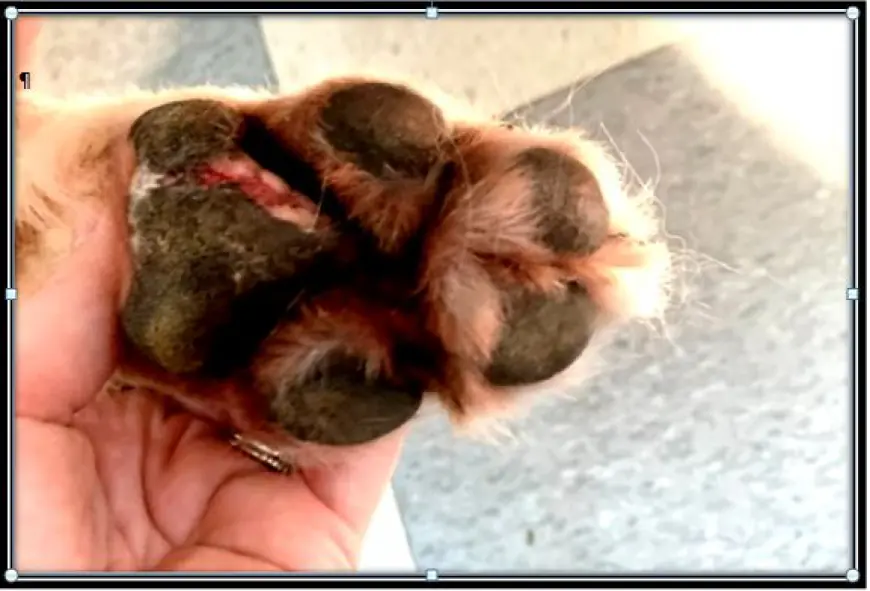What Are The Symptoms Of Paw Paw Infections In Labradors?
Uncover the symptoms of paw paw infections in Labradors. Find out what to look for and how to help your beloved pet.

Hey there! Have you noticed your beloved Labrador acting differently lately? It could be a sign of a paw pad infection, a common health issue that many dog owners may not be familiar with. When it comes to the health of your furry friend, it's crucial to be aware of the symptoms of paw pad infections so that you can address them promptly and effectively. In this blog post, we will discuss the signs and symptoms of paw pad infections in Labradors, as well as how to treat and prevent them. By the end, you'll have a better understanding of what to look out for and how to keep your pup healthy and happy.
Recognizing Paw Paw Infections
As a Labrador owner, it is important to recognize the symptoms of paw paw infections in your pet. Early detection and treatment can help prevent the infection from worsening and causing discomfort to your furry friend. Here are some key signs to look out for.
Early Signs of Infection
Early symptoms of paw paw infections in Labradors may include redness, swelling, and tenderness between the toes or on the paw pads. Your dog may also show signs of discomfort when walking or licking their paws excessively. These signs are often indicative of a developing infection that should be addressed promptly to prevent further complications.
Advanced Symptoms
If left untreated, paw paw infections in Labradors can progress to more advanced symptoms. These may include a foul odor emanating from the infected paw, discharge or pus, and the formation of sores or blisters. Your dog may also show signs of limping and exhibit noticeable pain when pressure is applied to the affected paw. In severe cases, the infection may spread to other areas of the body, leading to a more systemic illness.
Common Early Symptoms
- Redness and swelling between toes or on paw pads
- Excessive licking of paws
- Discomfort when walking
- Tenderness when pressing on paws
Advanced Symptoms
- Foul odor from the infected paw
- Discharge or pus
- Sores or blisters
- Limping and visible pain
- Systemic infection

Causes of Paw Paw Infections in Labradors
Some common causes of paw paw infections in Labradors include exposure to infectious agents and contributing factors and predispositions that make your dog more susceptible to developing an infection.
Common Infectious Agents
Infectious agents such as bacteria, yeasts, and fungi can cause paw paw infections in Labradors. These organisms thrive in warm and moist environments, making the paws of your dog susceptible to infection, especially after walks in muddy or wet areas.
Contributing Factors and Predispositions
Contributing factors and predispositions that can make your Labrador more susceptible to paw paw infections include allergies, hormonal imbalances, and immune system deficiencies. Additionally, dogs with long or thick fur between their paw pads are more likely to develop infections as moisture gets trapped, creating an ideal environment for pathogens to thrive.
- Excessive licking or chewing of the paws
- Walking on abrasive surfaces
- Underlying health conditions such as diabetes or hypothyroidism
Any of these factors can weaken the skin barrier on your dog's paws, making it easier for infections to take hold.
Diagnosis and Treatment
For Labradors, the diagnosis and treatment of paw paw infections are essential to ensure their health and well-being. With the right approach, you can effectively address the issue and alleviate any discomfort your Labrador may be experiencing.
Professional Diagnosis Procedures
When you suspect that your Labrador may have a paw paw infection, it is crucial to seek professional diagnosis from a qualified veterinarian. The veterinarian will conduct a thorough examination of your dog's paws, looking for signs of infection such as redness, swelling, discharge, or hot spots. Additionally, they may collect a sample of the discharge for further analysis to identify the specific pathogen causing the infection. In some cases, they may also recommend X-rays to check for any underlying issues such as foreign objects or fractures that could be contributing to the infection.
Available Treatments and Home Care
Once the paw paw infection has been diagnosed, your veterinarian will recommend the appropriate treatment based on the severity of the infection. This may include oral or topical antibiotics, antifungal medications, or other prescribed medications to address the specific pathogen involved. Additionally, your veterinarian may provide instructions for home care, such as proper cleaning and bandaging of the affected paws, as well as any necessary dietary or environmental changes to promote healing. It's important to follow your veterinarian's instructions closely and schedule any recommended follow-up appointments to ensure that your Labrador's paw paw infection is effectively treated.
Prevention and Maintenance
After learning about the symptoms of paw paw infections in Labradors, it's important to take steps to prevent them from occurring in the first place. Prevention and maintenance are key to ensuring your Labrador's paw health. By following some simple preventative measures and long-term paw health strategies, you can help keep your pet's paws healthy and infection-free.
Preventative Measures
One of the most important preventative measures you can take to protect your Labrador's paws is to regularly inspect and clean them. Check for any cuts, scrapes, or signs of irritation, and clean your dog's paws after walks to remove any debris or potential irritants. Additionally, keep your Labrador's nails trimmed to avoid them splitting or causing discomfort.
Long-Term Paw Health Strategies
In addition to regular paw inspections and cleaning, it's important to consider long-term paw health strategies for your Labrador. This includes ensuring your dog has a healthy diet that supports strong and resilient paw pads. Providing your Labrador with proper paw protection, such as dog booties, in extreme weather conditions or rough terrain can also help prevent injuries and infections. Finally, maintaining regular exercise, which includes controlled and monitored walks, can help build strength in your dog's paw pads, making them more resistant to infection.
Conclusion
On the whole, if you notice symptoms of paw paw infections in your Labrador, it is important to take prompt action to address the issue. By paying attention to signs such as redness, swelling, or discharge between the toes, you can catch the infection early and seek veterinary care. Remember to keep your dog's paws clean and dry, and to regularly inspect and clean their paws after walks to prevent infections from occurring. By staying vigilant and proactive, you can help keep your furry friend's paws healthy and happy.







